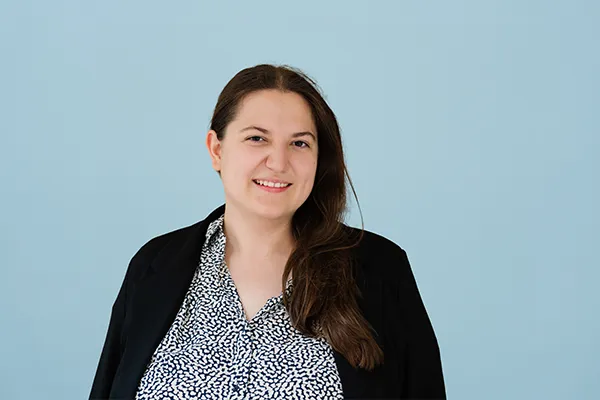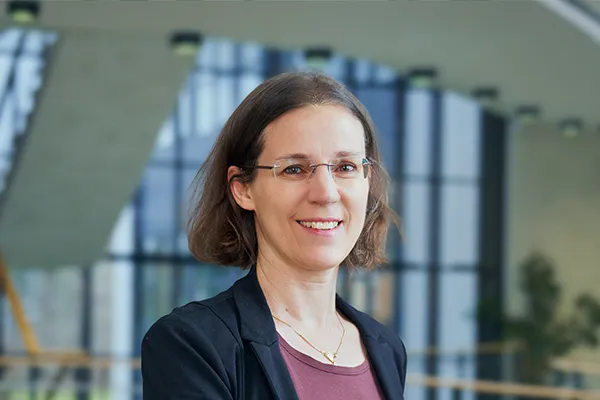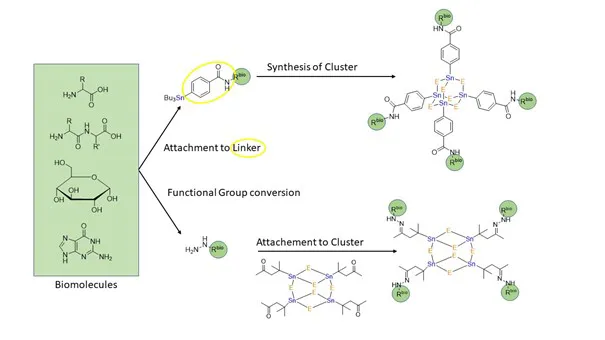Synthesis and Characterization of biofunctionalized organotin chalcogenide clusters
Martina Kämpfe — Hector Fellow Stefanie Dehnen
The cytotoxicity of organic tin compounds makes them interesting for cancer chemotherapy. Organotin chalcogenide clusters release under acidic decomposition not only an organic tin compound but also an even more toxic hydrogen chalcogenide. To enable biocompatibility of those clusters, they must be derivatized with biomolecules. This project aims to synthesize biofunctionalized organotin chalcogenide clusters and to investigate their decomposition behavior.
Organotin chalcogenide clusters are a highly versatile group of molecules consisting of an inorganic core composed of tin and chalcogen atoms as well as organic substituents on the outside of the cluster. Due to the cytotoxicity of tin compounds, one potential area of application is chemotherapy. When the clusters are decomposed in an acidic environment, as is often the case in cancer cells, they release not only a cytotoxic organotin species but also highly toxic hydrogen chalcogenide (e.g. H2S). To enable biocompatibility of the clusters, they must be derivatized with biomolecules as organic substituents.
The first step in this project is to lay the synthetic foundations. The aim is to develop a synthesis of biofunctionalized organotin chalcogenide clusters of the adamantane type using a novel linker system between tin and the biomolecule, which should enable modification with a broad spectrum of biomolecules such as amino acids, peptides, DNA bases and sugars. Furthermore, a synthesis for the functionalization of ‘double-decker’ type clusters, which have already been modified with amino acids and peptides, with other biomolecules such as DNA bases and sugars is to be developed.
Subsequently, the decomposition properties of the clusters will be investigated and compared in order to investigate the influence of the structure of the cluster cores and the biomolecules.
Schematic representation of the synthesis of biofunctionalized organotin chalcogenide clusters of the adamantane type (top) and the “double-decker” type (bottom). E describes the used chalcogen atoms sulfur, selenium, or tellurium, and Rbio describes the biomolecules.

Martina Kämpfe
Karlsruhe Institute of TechnologySupervised by

Stefanie Dehnen
ChemistryHector Fellow since 2024


